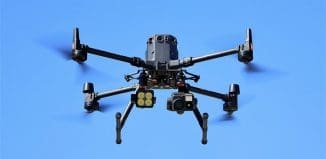Israeli Breakthrough: Super-Speed Video Synopsis
This post is also available in:  עברית (Hebrew)
עברית (Hebrew)
By Joe Charlaff

Video cameras are popping up everywhere. On a typical day out in a big city a person could be filmed by hundreds of closed-circuit television (CCTV) cameras. The combined output of all these systems is far greater than there are security staff to watch all the images. Hence there are various ways being used to automate the process.
Some systems work in “real time” to alert security staff to a potential incident being filmed by a camera. Such systems can read number plates on cars and identify certain faces. A number use powerful algorithms to detect suspicious behavior, such as a group loitering near a door where entry is barred or an item of luggage that seems to have been left unattended.
The other difficulty is searching through a mass of recorded images to see if anything has happened or to find a snatch of video of an incident known to have taken place. Some of the CCTV cameras watching a bank’s cash machines now make that job easier by linking video footage to transaction data. Other systems use analytical techniques, much like the real-time ones, to try to identify specific incidents. Error rates, though, can be high. Often there is no alternative to watching the playback manually, although if the footage is speeded up to make that process a little more bearable things can be missed.
Now an image-processing technology developed by BriefCam, an Israeli company, makes looking through CCTV footage a breeze. In some cases, 24 hours of video from a security camera can be searched in under a minute. The process works by showing only the bits that move. It essentially creates a summary of all moving events and plays that back as a synopsis superimposed over the static background image.
iHLS – Israel Homeland Security
So, a camera watching over a gate though which only a dozen people a day pass would appear like a much busier gate, with a dozen people using it in only a few seconds. The synopsis video can also be filtered by parameters such as color, direction, speed and area of interest so that, for example, all people wearing red and walking from right to left are presented first. As the video is not speeded up, each person moves at the speed they were filmed at. And at any time during the review an operator can switch to see the original video footage.
The process begins as the video is recorded. Using motion detection algorithms, the BriefCam software separates the background (static or non-moving objects) from the moving objects, tracking and analyzing any motion within the frame. It uses this information to create a database of backgrounds and events (also called objects or activities). When the video summary is needed, all moving events from the period of interest are collected and “shifted in time” to create the shorter synopsis video.
As the video summary displays all moving events it is less likely than analytical software to miss something, and it still relies on the instinct and experience of human operators—only making their time more valuable by editing out all the boring bits.































